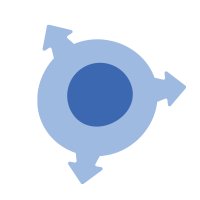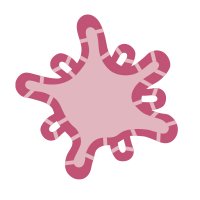
ESC & iPSC News
@esc_ipsc_news
An online resource for the pluripotent stem cell research community. Part of the @STEMCELLTech Science News service.
ID: 154610487
http://www.escellnews.com/ 11-06-2010 18:29:36
12,12K Tweet
8,8K Followers
791 Following



This Nature Communications paper highlights #iPSC-derived mature epicardium’s potential in investigating adult epicardial reactivation, pivotal for effective cardiac regeneration. This study was led by Dr. Yoshida and collaborators at Kyoto University! 🙌 go.nature.com/4kjOWde


By integrating multi-omics data across #ESC states, scientists including Dr. Wange Lu identified super-enhancers (SE) interacting with master transcription factors, exemplified by the Klf5-adjacent SE. 🧬 📚 Read it in Nature Communications: go.nature.com/4kqHQng


Scientists in the Pathak lab (Medha M. Pathak) have their eyes on #PIEZO1. 👀 🔬 They genetically engineered hiPSCs to express a HaloTag fused to endogenous PIEZO1, opening up new ways to study PIEZO1 #mechanotransduction in human systems: go.nature.com/3GnBqYf


#ESCs display a distinctive resistance against various viruses, but the mechanism behind this is unclear. In this study from Peking University, researchers identified VAMP5 as a potent cell-autonomous defense factor against coronaviruses: go.nature.com/3GzObyO


LOF mutations in the PINK1 & PRKN genes are the most common cause of early-onset #ParkinsonsDisease. A Mayo Clinic Neuro study from the Springer lab explored PRKN-activating mutations as a potential therapeutic avenue, finding a temporary gain of activity: bit.ly/4nG0GJX


The Fiorenzano lab (Alessandro Fiorenzano)'s new review on human midbrain organoid development is a guaranteed dopamine release for anyone trying to model the dopaminergic system. 🧠 See the paper in The EMBO Journal to learn about advancements in #BrainOrganoids: bit.ly/4eEW6Yi


DOT1L, which plays a role in leukemia pathogenesis, decorates actively transcribed genes with H3K79 methylation. Emmalee Cooke & Cheng Zeng (Case Western Reserve) have helped target DOT1L mutation-driven diseases by uncovering the downstream effects of methylation loss: bit.ly/46Dg1ov







The latest research out of MPI for Molecular Genetics clarifies the genomic targets and role of HELLS in human cells. 🎯 Drs. Alexander Meissner, Helene Kretzmer, and team generate HELLS and DNMT3A/B knockout hPSCs. 🔗 bit.ly/4kSoiIJ



Scientists report a unique metabolic method to promote #hPSC-cardiomyocyte differentiation. They show that serine synthesis pathway can regulate cardiomyocyte lineage specification. | iScience journal bit.ly/455zwnv




Dr. Anna Bigas' team presents a novel and unbiased approach to identifying endogenous components to specify hematopoietic stem cells from #PSCs. 🧫 Learn more in Blood Journals Portfolio! 👇 💡 bit.ly/3H1wRDb










